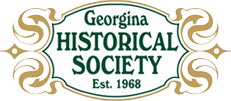Click to Download the PDF
Download the Word Doc
President’s Message
Welcome to the October edition of the GHS newsletter…looking forward to seeing you at our upcoming General Meeting on Tuesday, October 18 at 7pm. We have been invited to the Briars Golf Club to hear Hugh Sibbald speak on the 100 years of history of the Briars Golf Club. Looking forward to a very interesting talk on the 100th Anniversary of the club; hope to see you all there, meeting starts at 7:pm.
Also the Annual Meeting of the Georgina Historical Society will be held at the Sutton Legion on Thursday, November 17th, dinner at 6:pm, followed by elections and guest speaker. A roast beef dinner will be served, tickets for the dinner are $25 each. Please let us know if you can attend as soon as possible as the Legion wishes to know the number of those attending by November 3rd,
There is a need for people to fill 2 vacancies on the Board, to be elected at our Annual meeting. Please let us know if you are interested .
Our member Ewa Chwojko , Art Historian, is giving a series of Art Talks locally. Please check the website at https://artamica.com/ for more details.
Be well and stay safe.
Tom Glover, President
Elections
With municipal elections looming on the horizon, we thought it might be fun to have a look at how elections were held in pioneer times. The following has been excerpted from ‘Historical Narratives of Early Canada’ found in the Upper Canada History website at http://uppercanadahistory.ca/lteuc/lteuc10.html while all of the cartoon images have been separately referenced.

ELECTIONS IN UPPER CANADA
History tells how it really was.
“The more broken heads and bloody noses there are, the more election-like.” This cynical comment by William David Smith reflected what, in fact, often occurred at polling places during elections for the House of Assembly in early Upper Canada. Far from being the quiet climax to the political process, elections then were raucous events at which citizens expected food and drink at someone else’s expense. Farmers came from miles around to enjoy the excitement and entertainment which on one occasion included a side-show at Hind’s Hotel featuring “a curious creature called Sagou Brown, an orangutan for which the fascinated spectators paid one shilling.” As well as fun there were often fights as tempers flaired and fists flew when emotions reached fever pitch over the best person for the job.
While debates about election issues, personalities and public policy were matters of for real concern for some voters, others were more preoccupied with the nature of the nourishment being offered. What was there to eat and drink and how much each candidate was prepared to spend to wine and dine them. One candidate spent $200 on an unsuccessful campaign, while another’s victory cost him $500. Free food and drinks were basic expectations of all serious electors, and once this was accepted as a ‘given,’ candidates then vied for voters by improving on the quantity if not the quality of the electoral refreshments.
Smith realized this all too well, and capitalized on the insatiable appetites of the electors, whom he regularly referred to disparagingly as “the peasants.” Apparently, this name never bothered Smith’s supporters, for in three ridings, one of which was 3rd Lincoln, Smith’s vilified voters repeatedly returned him to office between 1792 and 1802. Smith was well known by the public. In addition to holding a seat in the Assembly, he was a member of the Executive Council, a deputy surveyor-general and Lieutenant of York County. Even when he ran unopposed, Smith left nothing to chance, once spending $900 for port, cheese and roast oxen, when he was the only candidate. Later he decided to change his electioneering tactics and give away only spirits. Despite this his popularity at the polls remained high.

While their “zeal was heightened by the effects of ardent spirits,” the electors were neither rubber-stamps nor pawns to be played with and controlled by the candidates. Even specially selected government candidates or nominees, no matter how important they were considered to be, were never shoo-ins. At one by-election, no less a personage than the Attorney General was put forward by the establishment and defeated. A government representative lamented his loss.
In His Own Words
“Alas, the low ignorance of the Electors defeated this wise man and elected instead an ignorant young man of their own level and neighbourhood.”
By today’s strict standards, elections then were highly irregular and often unruly. Drinks flowed freely, fights were frequent, flagrant efforts were made to keep people from voting, religious and national prejudices were loudly proclaimed, and when all else failed, downright deception was practised. All these activities remained perfectly normal electoral procedures for a number of years. Because organized political parties were regarded with suspicion, candidates spent a good deal of time trying to convince the electorate that they represented only themselves. Each individual produced his own platform, and in one case this included the promise not to canvass for votes, which according to the candidate was “beneath the dignity of any one who sought to represent the people.” He was running for office but had no intention of being so base as to appeal for votes.
Not so in the case of another candidate, one of whose supporters endorsed him with these ringing words: “Fellow electors, let us be unanimous, and for the love of our country, for the love of ourselves, our interests, our welfare, our rights, and liberties, assemble on that day when our dearest interests will be at stake and with one voice constitute Mr. Samuel Heron.”
Taxes, the perennial bane of all hardworking inhabitants, always brought the standard pre-election promises. One campaigner pledged to shift the burden of taxation from “industrious farmers and mechanics” to the “more opulent classes.” When another candidate was accused of promoting an increase in taxes, he denied it vigorously, loudly protesting,“It has been whispered that I have endeavoured to increase the general rate of assessments. This is a wretched misrepresentation!”
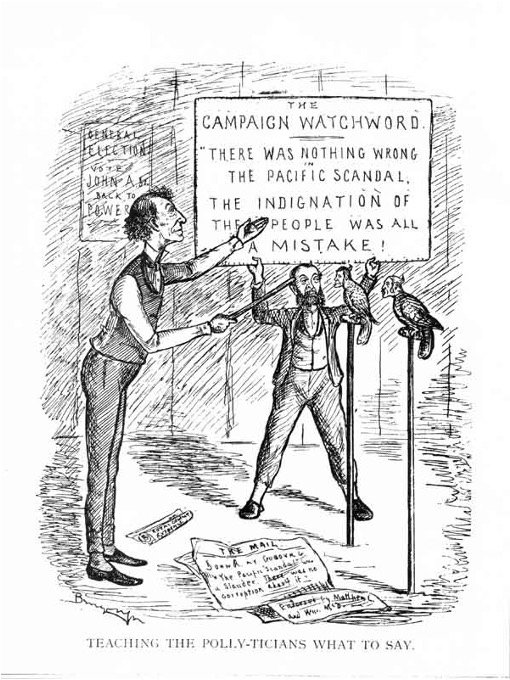
Sleazy campaign slander was denounced as “puny fabrications calculated to mislead your judgement and alienate your favour.” Accusations were called “barefaced falsehoods more insidious by far than any that ever issued from the lips of malice.” One candidate was quite sure the public would not be fooled by “the shallow artifice of exploded fibs.”
Promises came naturally to the politicians and for some of the campaigners, the sky was the limit. One promised if elected to make the merchants sell cheaper and to purchase himself whatever the voters might in future bring to market. In close races no holds were barred. If voters were in short supply in one area, runners were dispatched to “safe” sections of the district to collect more “to whom plenty of cheer had previously been sent.”
Railway Stations of Georgina – By Robert Holden
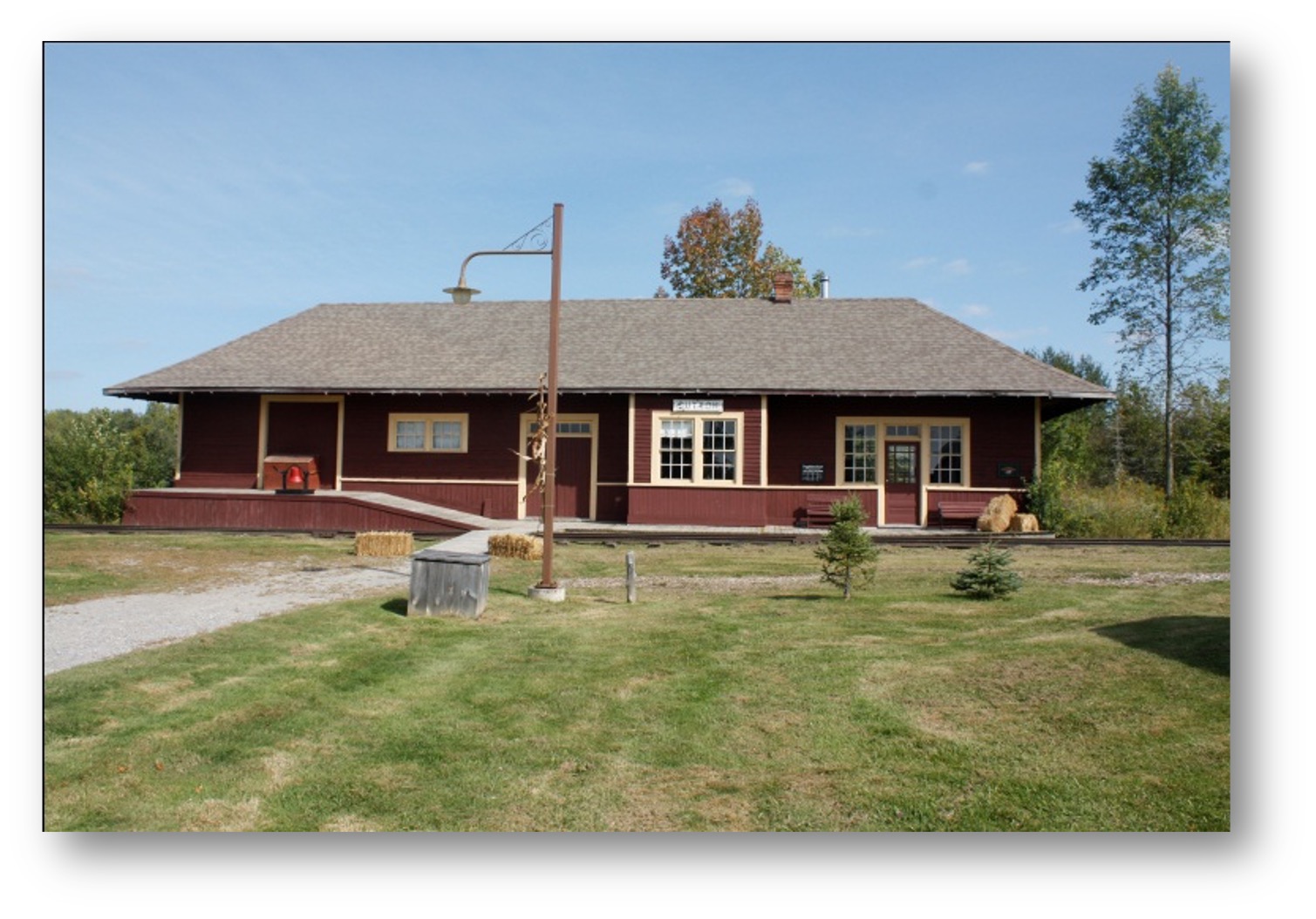
Sutton Station at Georgina Pioneer Village
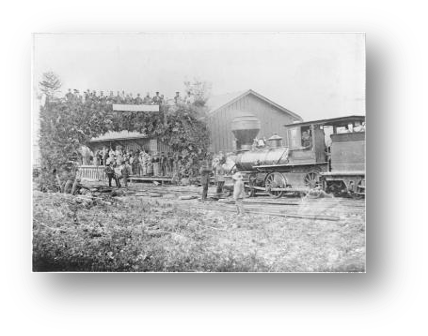
Our calendar image for October is the Sutton CNR Station; the third and final station built in Sutton. The first station was built for the Lake Simcoe Junction Railway. In the image to the left it welcomed the first train to Sutton in 1877. At a gauge of 3 feet six inches between the rails, equipment was smaller and lighter and the costs associated with its construction were much less expensive.
This first station burned down in 1900 and was replaced (see right) by the Grand Trunk Railway who by that time had assumed ownership of the railway. In 1923 it too caught fire and burned to the ground, and was rebuilt by the Canadian National Railways, a government merger of the Grand Trunk, Canadian Northern and several other lines that were approaching bankruptcy at that time.
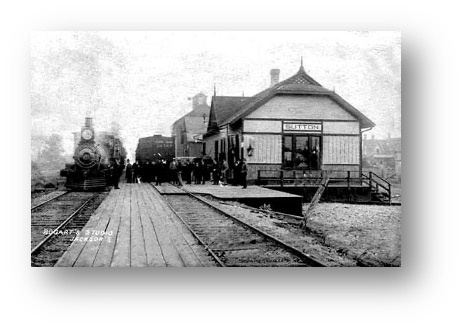
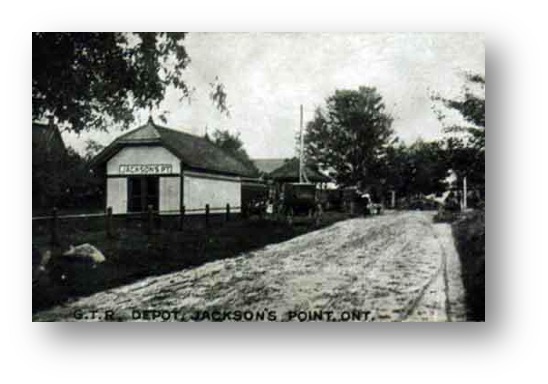
Another station constructed at Jackson’s Point by the Lake Simcoe Junction Railway was located on Lorne Street slightly south of where the park there now bends towards the pier. The right of way parallel to Lorne was converted to a park sometime after the rails were removed.
Other stations were built in Georgina to serve other lines. Arriving in 1906 at Pefferlaw, the Canadian Northern built a station in that community (see right) and another just south and west of there at Cedarbrae. (below).
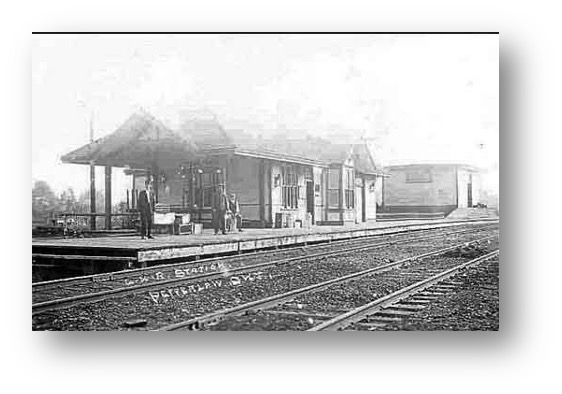
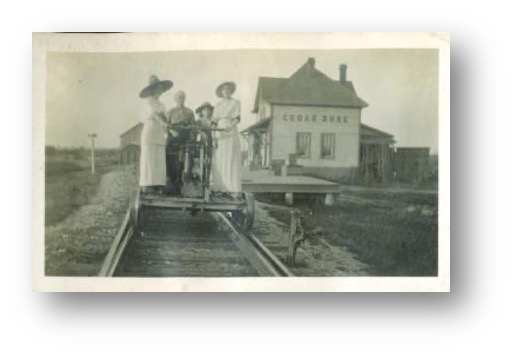
That line travelled through the eastern part of Georgina and today is the CNR mainline as it heads north proceeding on the east side of Lake Simcoe enroute to Sudbury and western Canada.
The third railway into Georgina was the Toronto and York Metropolitan Railway, an electric radial line that served mostly passenger traffic from Toronto. This line came north from Newmarket through Sharon and Queensville to Keswick where a major station was built near Church Street and Metro Road (which took its name from the railway).
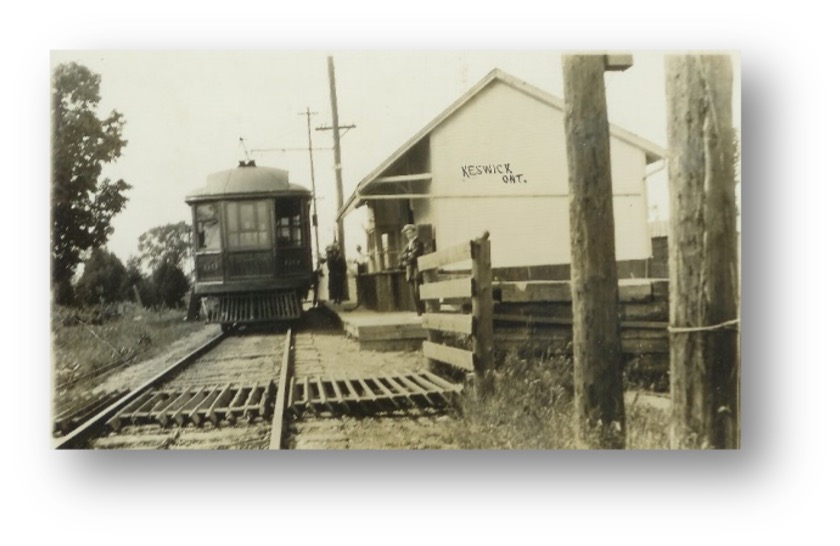
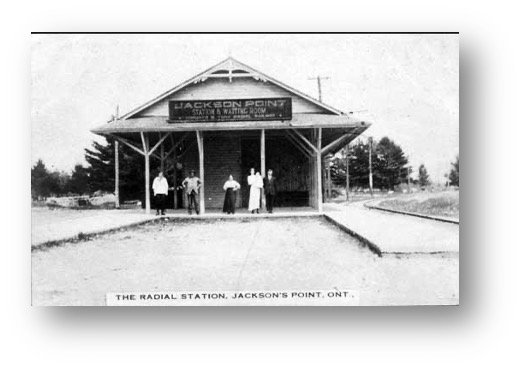
A power sub-station was built near that site and still exists providing Hydro service today.
The second major station for the radial line was built in Jacksons Point (see left), just south of where the Simcoe Arms is situated today (known at that time as the Trolleyrest).
Just east of the station was a set of tracks for turning equipment called a wye used until the section of track leading to Sutton was completed. This station served the many tourists arriving in Jackson’s Point to stay at the many resorts and guest houses during the warmer months of the year.
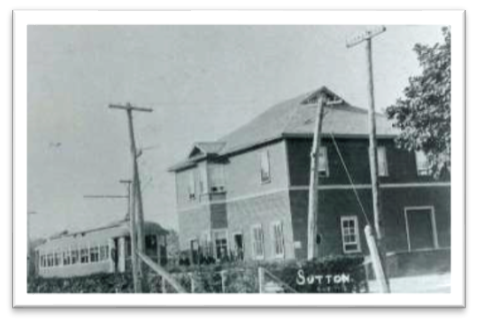
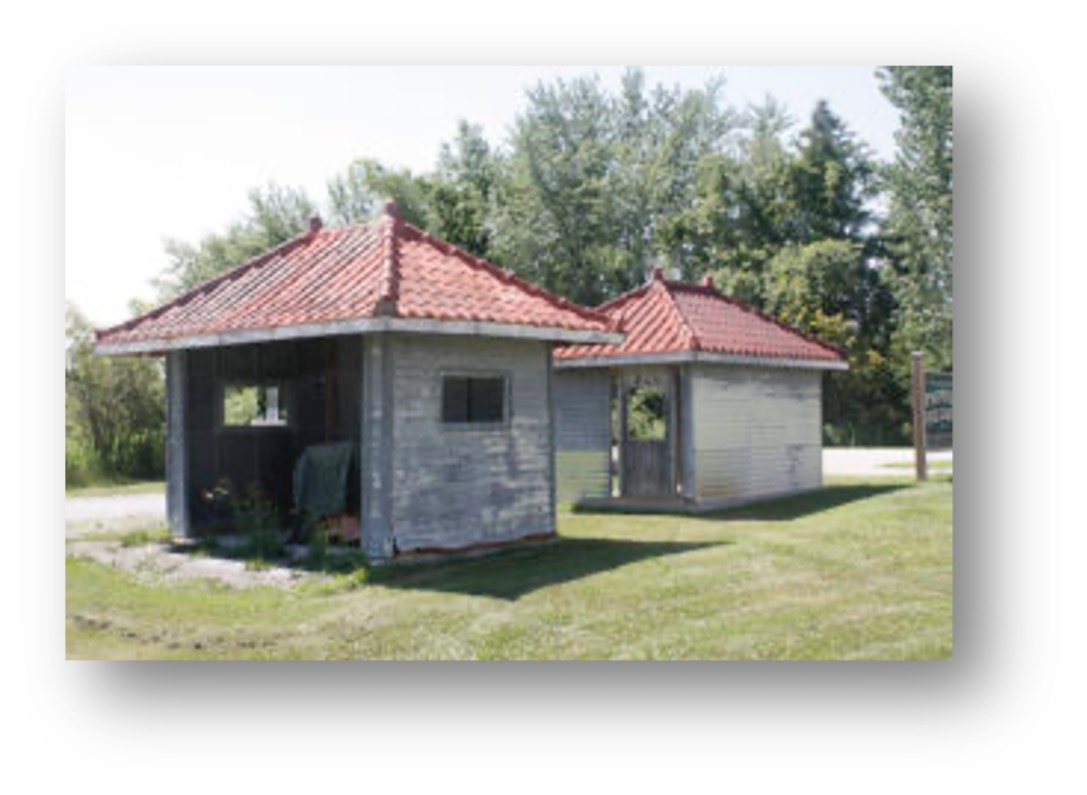
The final station for the Metropolitan Railway was built in 1906 on the northeast corner of Dalton and High Streets of Sutton (see above) and remained the end of the line right until the end of service in 1930. In between the three major stations along the radial line, small shelters like the two shown left were built to accommodate passengers and package freight at the many stops enroute between the larger stations.
At Boyers Road in addition to a waiting room there was a small freight shed for package goods and small shipments, and at Orchard Beach an old car body was in use as a waiting room.
The Metropolitan Railway took most passenger service from the Grand Trunk line to Sutton by the 1920s. Train schedules were changed back to mixed trains and then to freight only service. The Metropolitan Railway was faster, more flexible and more efficient at moving passengers to the south shore of Lake Simcoe, especially during the warm months of the summer tourist season. Main roads were now paved and the movement of freight by truck was more efficient and economical. In 1927, tracks leading into Jackson’s Point were abandoned and by 1929 the station closed. By 1928 the Sutton line terminated in a junction at the old Zephyr Crossing with a wye to turn trains. Later the line was abandoned and in 1979 the station was moved to Georgina Pioneer Village.
Where in Georgina?
Can you identify the location and name of the mystery location below?
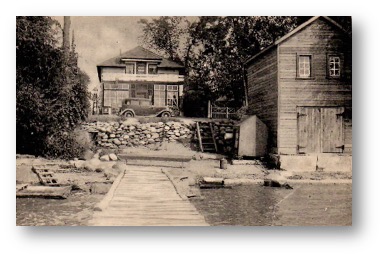
Our Pioneer Ancestors
ARCHIBALD RIDDELL, lot 8, concession 3, whose birth-place is in the Parish of East Kilbride, Lanarkshire, Scotland, emigrated to Canada in the year 1829. He remained four years in Quebec Province, and then removed to the vicinity of Hamilton and in 1838 settled in Georgina Township. He was married in 1840 to Catharine Munroe ; they had twelve
children, eight of whom are living. Four of his sons are settled in the township and all in prosperous circumstances.*
*Excerpted from: History of Toronto and County of York, Volume II; C. Blackett Robinson, Publisher 1885, p. 511.
Blasts from the Past
Harry Horne (Horneville) in Keswick made his money with a canned custard powder he created. Below left is an image of his custard package from eBay shared with us by Melissa Matt. In the 1940s or 50s, Harry Horne operated a summer cabin resort in Orchard Beach. Below right is Howell’s storefront on Queens Street West in Toronto in 1928.
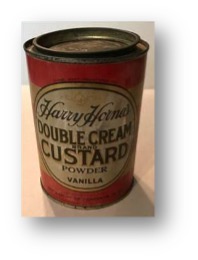
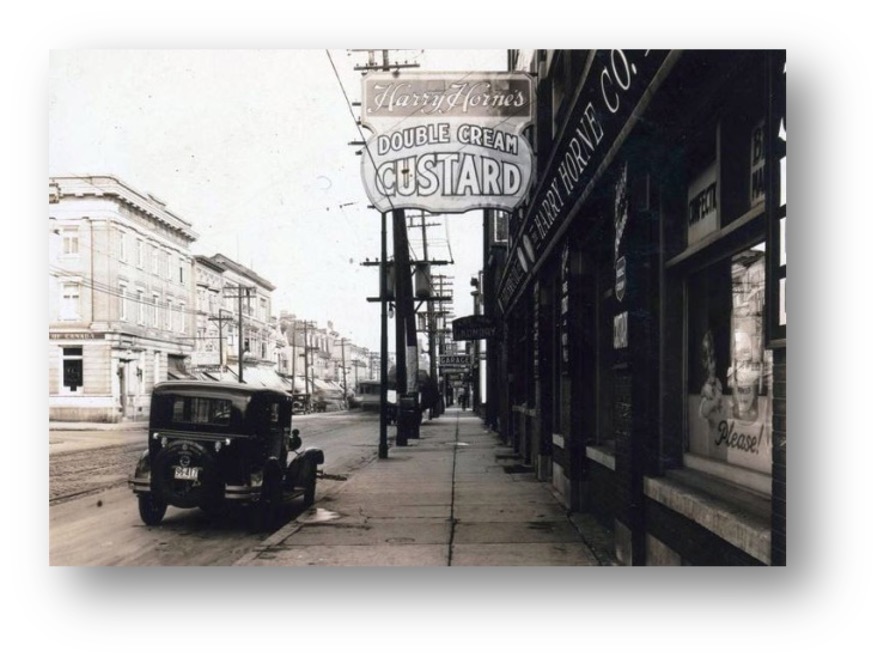
Our President, Tom Glover, recently received a query from Perry Smith for photos of the old Keswick Arena. Karen Wolfe responded to his request that there were a number of photos of the old Keswick arena on the Keswick Old Skool and its people Facebook page. She shared with us the two images below;

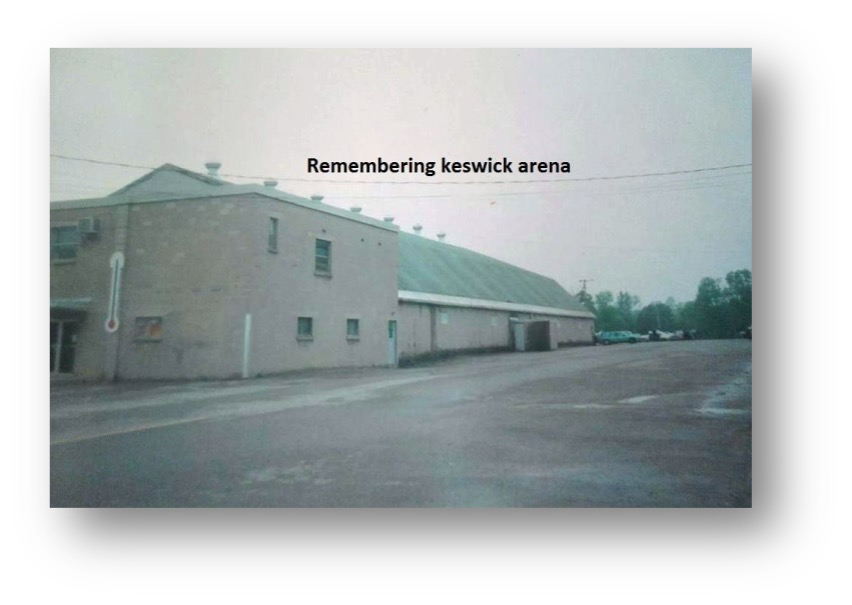
News
The school house in the Pioneer Village still is still not open and will not be until next spring. Approvals for its use have not been forthcoming from the Buildings Department of the Town. Though a heritage reconstruction, the building was deemed a “new build” and as such must meet the more stringent building code requirements of today. We suspect that none of today’s vintage buildings in the Village would pass the current building code test. Yet, after well over 100 years they are all still standing and in use!
In our Annual Meeting in November we will be holding our annual election of officers for your Board. Nominations will be put forward for a new President and Vice-President and there will be openings on the Board for two new Directors. If you are interested in a more active role in the Georgina Historical Society or know of someone you know that would like to contribute by serving on the Board please contact Tom Glover at btglover@rogers.com or Paul Brady at pkbrady@rogers.com

Events
October 17, 24, 31, November 17th – GHS member and art historian, Ewa Chwojko, will hold a series of Art Talks; from noon to 2 PM at Bold Steps Dance Studio, 21100 Dalton Road, Jacksons Point. Cost $15 per session…see https://artamica.com/ for details.
October 17 – General Meeting on Tuesday, at 7pm at the Briars Golf Club clubhouse; Hugh Sibbald to speak on the 100 years of history of the Briars Golf Club.
November 7th – Board Meeting, 2 PM
November 18th – Thursday Annual Meeting of the Georgina Historical Society at the Sutton Legion on Thursday, , dinner at 6:pm, followed by elections and a guest speaker. A roast beef dinner will be served; tickets for the dinner are $25 each. Please let us know if you can attend as soon as possible as the Legion wishes to know the number of those attending by November 3rd.
